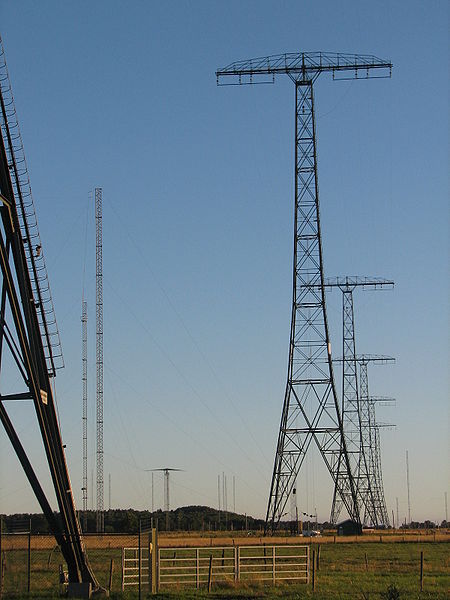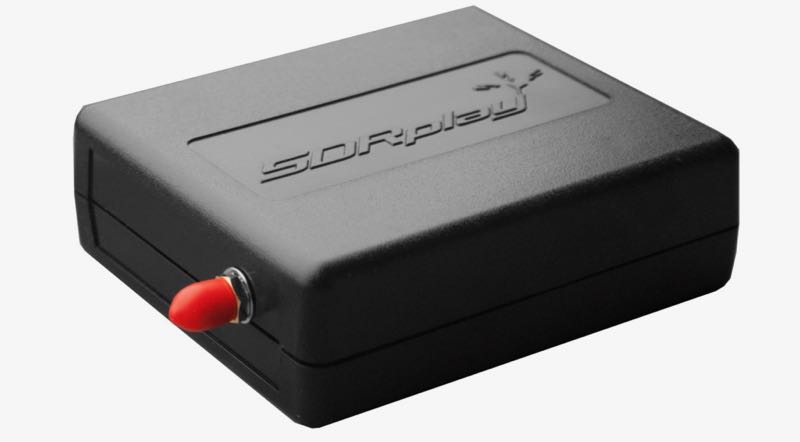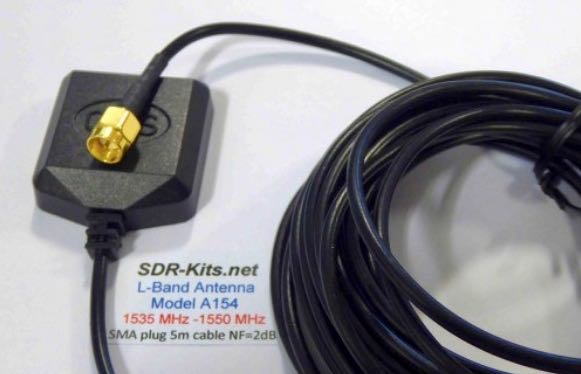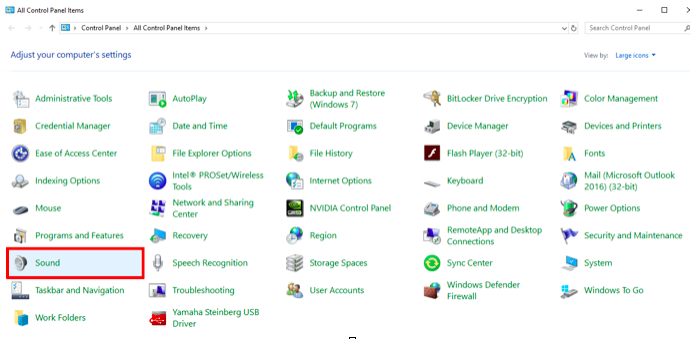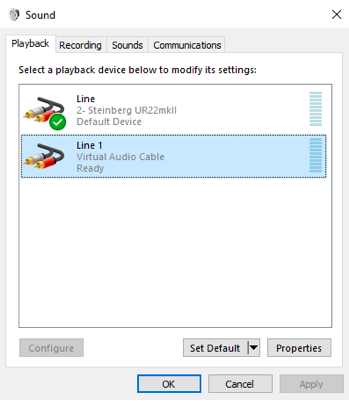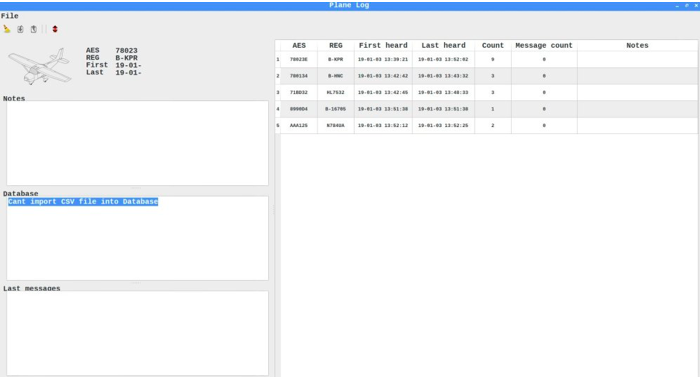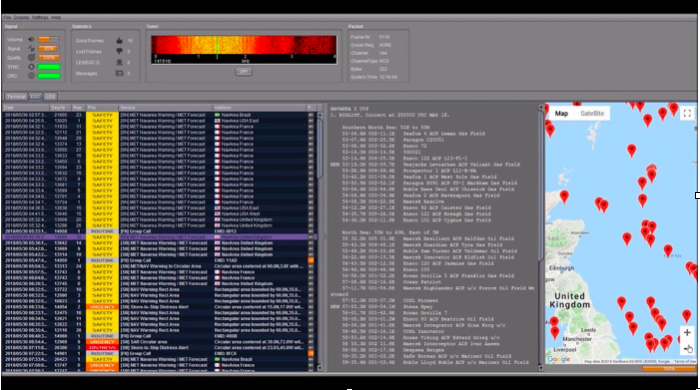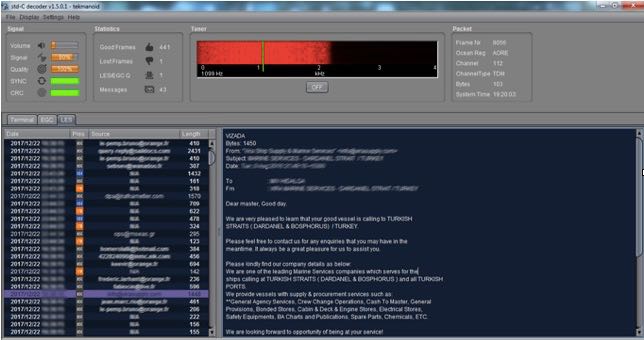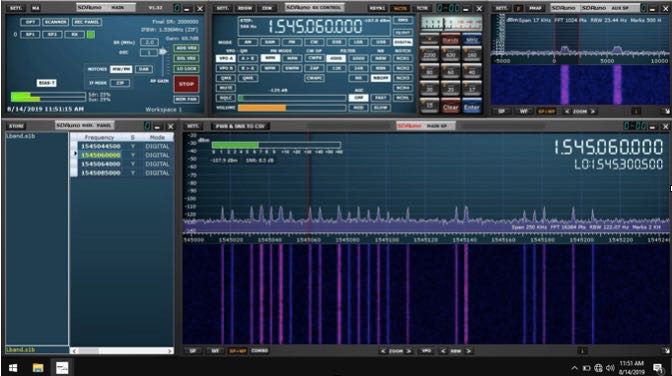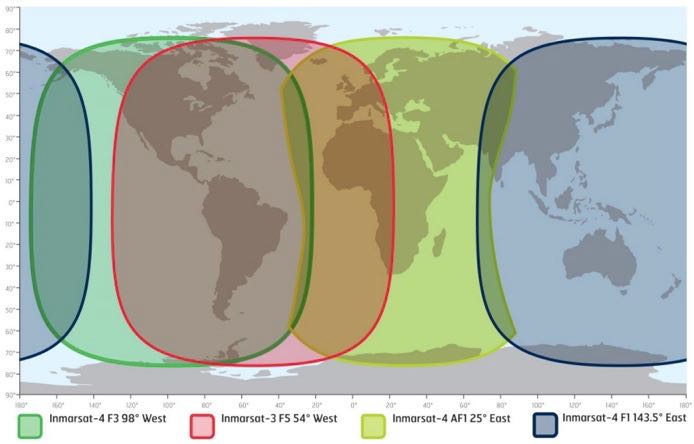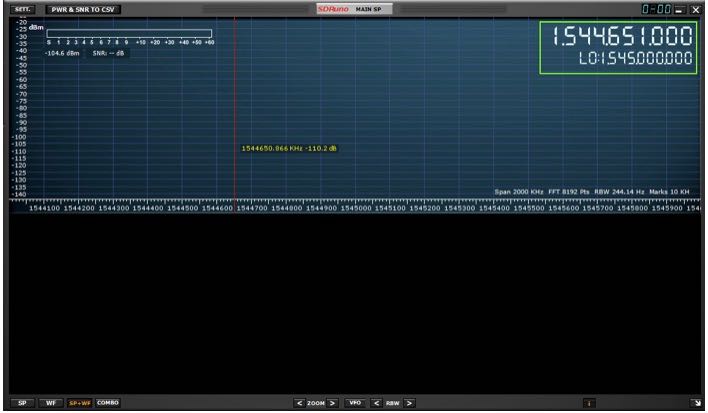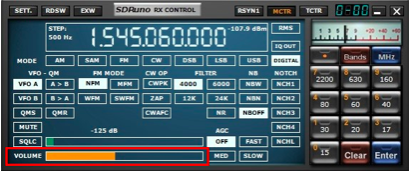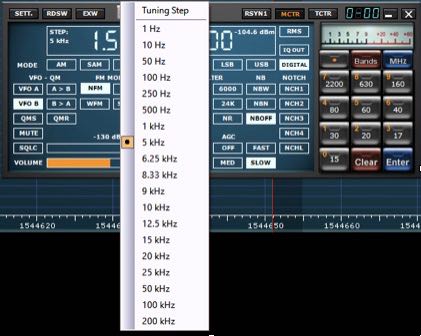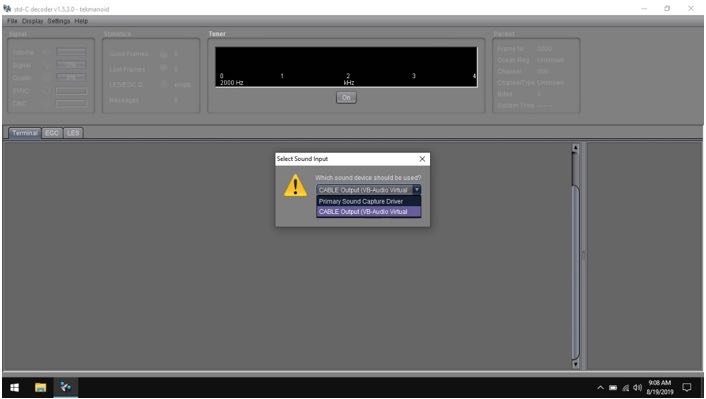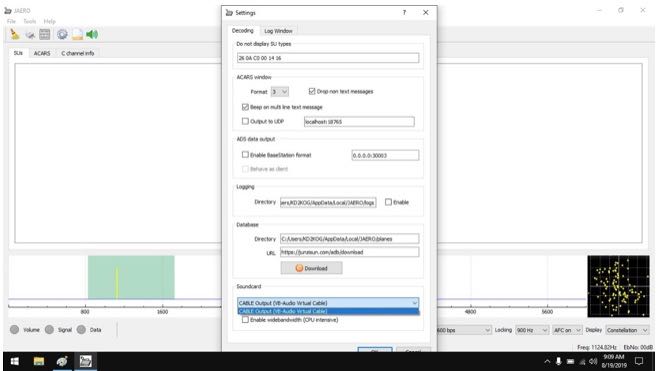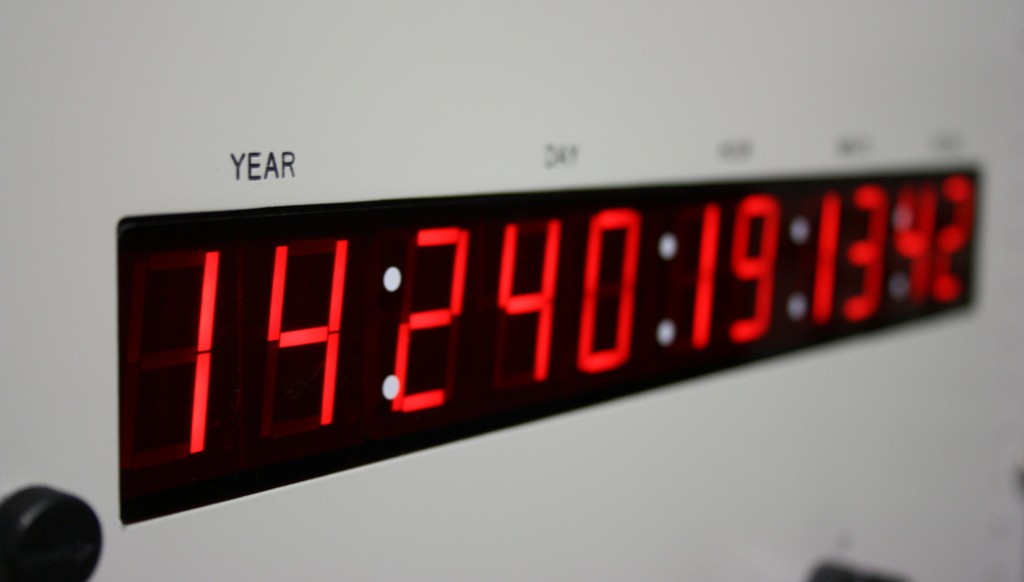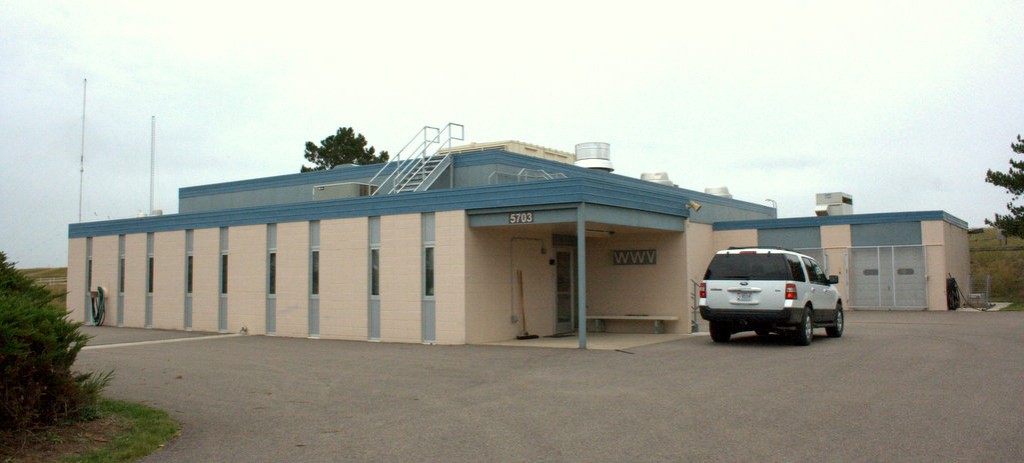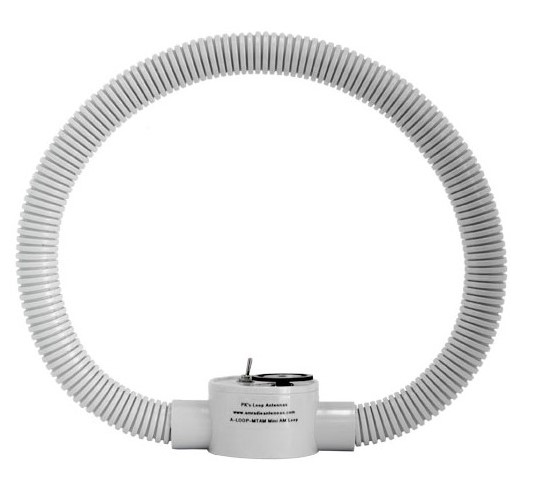Encore – Classical Music on Shortwave – Broadcast on Sunday afternoon in Europe and USA
AirSpy HF+ Discovery: First Impressions on Medium Wave vs. Elad FDM-DUOr
The highly anticipated AirSpy HF+ Discovery SDR has been in the hands of early adopters for about two weeks–and I’ve seen nothing but positive comments!
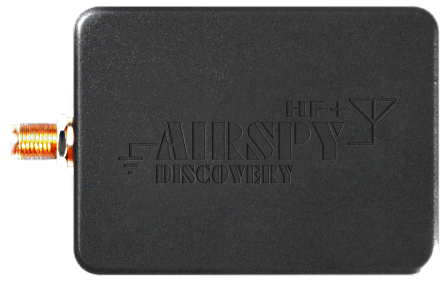 After a long run (2007-2013) with a Microtelecom Perseus, my SDR of choice became the Elad FDM-S2, and more recently an Elad FDM-DUOr “hybrid” SDR receiver. The two Elads have the same core processing components and identical performance when the DUOr is connected via SDR software.
After a long run (2007-2013) with a Microtelecom Perseus, my SDR of choice became the Elad FDM-S2, and more recently an Elad FDM-DUOr “hybrid” SDR receiver. The two Elads have the same core processing components and identical performance when the DUOr is connected via SDR software.
This week I’ve compared the HF+ Discovery ($169) against the FDM-DUOr ($899) using Studio 1 software and identical modes & settings. The following video features the radios’ performance on a crowded daytime medium wave band from suburban Seattle-Tacoma USA.
https://www.youtube.com/watch?v=vkQQeF2edCU
Click here to view on YouTube.
Notes:
- Software used is two “instances” of Studio 1, version 1.06e
- Antenna is an east-west oriented Wellbrook ALA1530LNP Imperium loop
- Mode, filter bandwidth, AGC, etc. are the same for each radio
- 768 kHz sampling bandwidth used for both receivers
Stations tuned are:
- 1320 KXRO Aberdeen WA, 74 miles @ 5 kW (in-line with antenna)
- 1110 Oak Harbor WA, 78 miles @ 500 watts (in antenna’s null)
- 1040 CKST Vancouver BC, 147 miles @ 50 kW (in antenna’s null)
- 1430 KBRC Mt. Vernon WA, 85 miles @ 5 kW (in antenna’s null)
- 750 KXTG Portland OR, 118 miles @ 50 kW (in antenna’s null)
I purposely sought out signals difficult to hear in the presence of powerhouse stations. Only 1320 kXRO (in-line with my antenna) and 750 KXTG are what you might consider average or fair quality signals. Headphones are recommended for most of these, particularly 1040 kHz.
You’ll note that the pass band has been “pulled” over the edge of the carrier frequency by a few hundred Hertz. This is an excellent trick that can often reduce noise and/or improve intelligibility. It’s a feature unique to Perseus, Studio 1, and SDRuno software; it works in sideband modes and in selectable sideband Sync AM (SAM) mode.
After listening to the signal comparisons, what are your thoughts on the HF+ Discovery? Please leave your comments below.
Guy Atkins is a Sr. Graphic Designer for T-Mobile and lives near Seattle, Washington. He’s a regular contributor to the SWLing Post.
SAQ receives 438 listener reports
(Source: Southgate ARC)
Alexanderson Alternator station SAQ says it received 438 listener reports — ‘an incredible amount’ — for its June 30 Alexanderson Day transmissions from Sweden including 8 ‘super’ DX reports, five from the USA and three from Canada.
The historic electro-mechanical transmitter, which dates back to the 1920s, is fired up periodically throughout the year on 17.2 kHz.
“We are very thankful for all your enthusiastic and positive feedback, with images, recordings, videos, and even Morse ink writer strips,” SAQ said.
The station is a World Heritage Site in Grimeton, Sweden and SAQ’s June 30 message commemorated the 100th anniversary of the first east-to-west transatlantic voice transmission from the Marconi station in Ireland to Cape Breton Island, Nova Scotia.
SAQ has posted an interactive map showing the locations of all received listener reports from recent transmissions and video of the Alexanderson Day transmission event has been posted to its YouTube channel.
Guest Post: Decoding Inmarsat L-Band AERO and STD-C messages using the SDRplay RSP SDR
Many thanks to SWLing Post contributor, Mike Ladd (KD2KOG), who shares the following guest post. Note that the following tutorial is also available as a PDF (click here to download).
Basics to decoding Inmarsat L-Band signals using the RSP SDR
by Mike Ladd
Note: CHECK WITH YOUR LOCAL LAWS BEFORE DECODIING ANY SIGNALS FROM THE INMARSAT SYSTEM
Hardware used
SDR: RSP1a SDR from SDRplay? https://www.sdrplay.com/rsp1a/
Antenna: Modified GPS patch antenna for L-Band from SDR-Kits, model A154.? https://www.sdr-kits.net/L-Band-Receive%20Antenna
Software used
SDRuno v1.32
https://www.sdrplay.com/downloads/
VBcable (Donationware) vPack43
https://www.vb-audio.com/Cable/
VAC (Paid for use) v4.60
https://vac.muzychenko.net/en/
JAERO (Free) v1.0.4.9
https://github.com/jontio/JAERO/releases
Tekmanoid STD-C Decoder (Paid for use) v1.5.1
Requires Java JRE, check your local laws before using this decoder.
http://www.tekmanoid.com/egc.shtml
https://www.java.com/en/download/
Introduction
(some text taken and edited from the RTL-SDR Blog website)
This document is not a definitive guide to Satcom, L-Band transmission or the Inmarsat system. This is a collection of information that I have found scatter throughout the internet and re-compiled into a document, this document. My aim is to help you get started and hopefully guide you in the right direction. Expect typographical mistakes, inaccuracies, or omissions
Inmarsat is a communications service provider with several geostationary satellites in orbit. Inmarsat provides services such as satellite phone communications, broadband internet, and short text and data messaging services. Geostationary means that the Inmarsat satellites are in a fixed position in the sky and do not move.
The Inmarsat 3-F(x) satellites have transponders transmitting data in L-Band (1.5 GHz) that can be decoded.
The modes we will cover in this document are Aeronautical (Classic Aero or ACARS) and Inmarsat-C (STD-C) using an RSP1a, RSP2/2pro or RSPduo connected to the SDR-Kits modified L-Band patch antenna. The Inmarsat system is not limited to only these types of networks. We are limited to the decoders available.
https://en.wikipedia.org/wiki/Inmarsat
Some regions that use the I-3 satellite services moved and migrated to the Inmarsat I-4 Satellites. See the following document. https://www.inmarsat.com/wp-content/uploads/2018/09/INM_C_I3_I4_migration_guide_V3.0.pdf
Two of the most popular decoding applications are JAERO used for ACARS and Tekmanoid STD-C Decoder used for decoding STD-C NCS transmissions on the Inmarsat 3-F(x) satellites
https://www.sigidwiki.com/wiki/Inmarsat_Aero
https://www.sigidwiki.com/wiki/Inmarsat-C_TDM
Software installation
Virtual Audio Cable: A virtual audio cable allows you to pipe audio from application (SDRuno) into another application (a decoder like JAERO) digitally. I will assume SDRuno is already installed with your device attached and functioning properly.
You can now download a virtual audio cable package. If you already have a virtual audio cable package installed, you can skip to the next section. If you don’t have a virtual audio cable application installed, you only need to choose one and only install one of the two, either one works fine
Close any running apps, install the virtual audio cable and reboot your computer. When your computer boots back to your desktop, your computer will now have a virtual audio cable pair installed on the system.
You can verify by going to your Control Panel and double clicking the Sound icon. VB-Cable and Virtual Audio Cable will only install a single virtual audio cable pair, one is for the input (Recording) and one is for the output (Playback). A single pair is all that is needed (as shown below).
JAERO
(some text taken and edited from the JAERO website)
JAERO is a program that decodes ACARS (Aircraft Communications Addressing and Reporting System) messages sent by satellites (in this case Inmarsat) to Airplanes (SatCom ACARS). This is commonly used when airplanes are well beyond VHF range.
JAERO also allows for decoding and demodulation of voice calls, due to local laws and privacy, I will not show or discuss how to do this. You can find more information about that JAERO feature online.
JAERO can be downloaded from the link provided on the first page of this document. After downloading the installer, simply double click the setup file and install it on your primary drive.
Tekmanoid STD-C Decoder
(some text taken and edited from the USA-Satcoms website)
Inmarsat STD-C is a data or message-based system used mostly by maritime operators. An Inmarsat C terminal transmits and receives on L-Band to various geosynchronous satellites that service each major ocean region.
The Tekmanoid STD-C decoder will decode STD-C Inmarsat EGC (enhanced group call) and LES (land earth station) messages. Some of these messages contain private information. Reception of these messages may not be legal in your country; therefore, your local laws should be checked.
The Enhanced Group Call (EGC) service is a message broadcast service with global coverage (except the poles) within the Inmarsat-C communications system. Two of the services provided are:
FleetNET and SafetyNET
FleetNET is used to send commercial messages to individuals or groups of subscribers (for example, individual companies communicating with their own Mobile Earth Stations (MES). SafetyNET is used for broadcasting Maritime Safety Information (MSI) such as Navigational warnings, meteorological warnings, meteorological forecasts and other safety related information (including Distress Alert Relays) from official sources.
The LES station acts as an interface (or gateway) between the Inmarsat space segment and the national/international telecommunications networks.
The Tekmanoid STD-C decoder requires Java JRE in order to run. The link for the Java runtime environment is on page 2 of this document. For information contact the developer direct [email protected]
There are alternatives to using the Tekmanoid STD-C decoder, but in my opinion the other decoders available do not perform as well on low end systems or even work without needing “helper” applications to be installed. Tekmanoid STD-C decoder is very easy to use and works great on my low-end system using minimal system resources.
Putting all the pieces together
ACARS and STD-C messages will transmit via the Inmarsat satellite deployed within your coverage area/region, you will need to choose the Inmarsat satellite that is closest to your coverage area.
Note that only different frequencies are used between ACARS transmissions and STD-C transmissions. You will only need to receive from one of the available 3-F(x) Inmarsat satellites.
L-Band ACARS transmissions are in the 1.545 GHz range but STD-C messages are on fixed frequencies (shown on page 8)
Since STD-C transmissions are broadcasted on fixed frequencies, we want to monitor the TDM NCSC channel, again these are fixed for the following Ocean Regions. Choose the region closest to your location (page 9).
Again, some regions that use the I-3 satellite services moved and migrated to the Inmarsat I-4 Satellites. See the following document. https://www.inmarsat.com/wp-content/uploads/2018/09/INM_C_I3_I4_migration_guide_V3.0.pdf
STD-C transmissions are broadcasted on fixed frequencies, NCSC channel. The NCSC frequency per region is noted below.
Inmarsat satellite: Inmarsat-4 F3 (AOR-W)
Direction: 98° West
Frequency: 1.537.70 GHz
Inmarsat satellite: Inmarsat-3 F5 (AOR-E)
Direction: 54° West
Frequency: 1.541.45 GHz
Inmarsat satellite: Inmarsat-4 F1 (IOR)
Direction: 25° East
Frequency: 1.537.10 GHz
Inmarsat satellite: Inmarsat-4 F1 (POR)
Direction: 143.5° East
Frequency: 1.541.45 GHz
I will assume you have located the Inmarsat satellite that covers your region. I suggest using a compass on your mobile phone to pinpoint the general direction. The direction is in ° (degrees). I am referencing true north, not magnetitic north (traditional analog compass). https://en.wikipedia.org/wiki/Magnetic_declination
You can also download an app for your smartphone called Satellite AR (Android and IOS). After you locate the correct direction of the Inmarsat satellite, you will want to place the L-Band patch on a flat metal surface. I have read that the receive pattern of this patch antenna is z (about 85-90°, straight up). Point the top of the antenna facing the Inmarsat satellite. Using the roof of my car worked just fine, just remember to point the front of the antenna at the satellite.
Launch SDRuno and click the PLAY button, remember that if the RSP(x) is in ZERO IF mode, give frequency separation between the VFO (top frequency) and LO (bottom frequency). In LOW IF mode this is not needed. I suggest running a sample rate of 2 MHz, larger bandwidths are not needed.
The SDR-Kits patch antenna requires that the RSP(x) Bias-T be enabled. The Bias-T option is enabled within the MAIN panel of SDRuno. See the SDRuno manual located here. https://www.sdrplay.com/docs/SDRplay_SDRuno_User_Manual.pdf view page 17.
With the Bias-T enabled. Set the RSP(x) RF GAIN to max. The RF GAIN slider is located on the MAIN panel. See the SDRuno manual located here. https://www.sdrplay.com/docs/SDRplay_SDRuno_User_Manual.pdf view page 17.
For more information about the RF GAIN settings of the RSP(x)
https://www.sdrplay.com/wp-content/uploads/2018/06/Gain_and_AGC_in_SDRuno.pdf
Select the Virtual audio cable as the output in SDRuno, this is selected via the RX Control panel. SETT. button and clicking on the OUT tab.
Have SDRuno’s Volume slider (RX Control) at about 35-40%
Upper sideband is recommended but I found the best mode to use for L-Band ACARS or L-Band STD-C decoding is DIGITAL with a filter width of 3k.
Be sure to set a proper step size (right click the RX Control frequency readout). The step size is not important for STD-C transmissions because these signals are only on one frequency for the satellite in your region but L-Band ACARS signals will be on many frequencies. Setting the proper step size will avoid issues when you point and click on signals you want to decode using the JAERO decoder.
You will want to center the signal with a little breathing room within the AUX SP filter passband. The filter slopes are very sharp. Keep the signal centered and away from the extreme edges (red markers).
Select your virtual audio cable within the decoder’s audio input preferences.
The Tekmanoid STD-C decoder sound properties are located under Settings in the toolbar menu.
JAERO’s sound settings is located under the Tools menu and Settings.
For STD-C decoding use the frequency from page 8 of this document, remember we only want to monitor the TDM NCSC channel in the Tekmanoid STD-C decoder.
For JAERO decoding, I suggest you start in the 1.545 GHz portion and observe the constellation in the JAERO decoder.
The signal to noise ratio (SNR) needed for successful decoding in these decoders will need to be greater than 7dB. When working with a weak satellite signasls, try decimating the signal using SDRuno’s decimation feature. (MAIN panel, DEC).
Click here to view on YouTube.
Additional resources
Videos:
Click here to view on YouTube.
Click here to view on YouTube.
Click here to view on YouTube.
Click here to view on YouTube.
SDRuno:
L-band frequency bank
https://mega.nz/#!jRFRiSaA!CcmRRRpjToxPzyGV9bf7MkDkKnqCYZCwwjC5curWj6g
PDFs:
http://seaworm.narod.ru/12/Inmarsat_Maritime_Handbook.pdf
Websites:
I hope this document helps you get started decoding Inmarsat L-Band transmissions from the I3-F(x) satellites. I am sure I missed some key features, remember this is only a primer/basics to decoding these types of transmissions.
Warmest of 73,
Mike-KD2KOG
Many thanks for sharing your tutorial here on the SWLing Post, Mike! This looks like a fascinating activity that really requires little investment if one already owns an RSP or similar SDR. I’m certainly going to give L-Band a go! Thank you again!
Do you enjoy the SWLing Post?
Please consider supporting us via Patreon or our Coffee Fund!
Your support makes articles like this one possible. Thank you!
Please Take Action: DOD Broadcast and Listener Survey on WWV and WWVH
Many thanks to SWLing Post contributor, Dennis Dura, who shares the following note from Paul English (WD8DBY), Chief, Army MARS:
DOD Broadcast and Listener Survey on WWV and WWVH
From 14-24 August, WWV and WWVH will be broadcasting a DOD message at 10 mins past the hour on WWV and 50 mins past the hour on WWVH. As part of the message, all listeners are asked to take a listener survey at the URL specified in the message.
www.dodmars.org/home/wwv-survey
The results of this survey are shared with WWV/H personnel to show their NIST chain of command how often their stations are monitored and how the various timing signals and messages are used by the listeners.
Please take a listen to this message and take the survey…as the saying goes, “every vote counts” and your input to this survey is being used to help demonstrate the importance of these stations.
Thanks for your consideration in this effort.
Paul English, WD8DBY
Chief, Army MARS
Many thanks for sharing this, Dennis. Readers have also shared this ARRL News item urging listeners to take the DOD survey.
If you appreciate WWV/WWVH, please take a moment to complete this short survey.
Trial Run of WWV Special Event Station August 24 & 25
(Source: ARRL via Eric McFadden)
WWV Centennial Committee Prepares for Trial Run of WW0WWV Special Event
The WWV Centennial Committee reports that it will conduct a trial run of special event station WW0WWV over the August 24/25 weekend.
Radios and antennas began arriving last week, and a tower and beam will be erected, along with several vertical antennas. WW0WWV will be set up adjacent to the WWV transmitter site in Fort Collins, Colorado. WWV turns 100 years old on October 1.
“We’ll be testing band and notch filtering, in an attempt to reign in the extreme RF environment created by WWV and WWVB,” said Dave Swartz, W0DAS, of the Northern Colorado Amateur Radio Club (NCARC).
The club will carry out the special event operation in conjunction with the WWV Amateur Radio Club and the National Institute of Standards and Technology (NIST), which operates WWV/WWVH/WWVB.
The special event site is within 1/3 of a mile of all six WWV transmitters and the 50 kW WWVB transmitter. “On-air tests will start Saturday afternoon, August 24, and run through Sunday, August 25,” Swartz said, adding that organizers will post specific times and frequencies on the WWV Centennial Committee website.
The WWV Centennial special event is set to run from September 28 through October 2, and round-the-clock operation will take place on CW, SSB, and digital modes. Operations will shift among HF bands following typical propagation and will include 160 meters as well as satellites (SO-50, AO-91, and AO-92) and 6-meter meteor scatter.
Up to four stations will be on the air for routine operations. A fifth station will schedule contacts with schools, universities, and museums, as well as conducting unscheduled contacts. The additional station will periodically broadcast an AM carrier from a radio locked with WWV’s 10 MHz signal.
“At this point we have filled our operator’s slots and met equipment goals, but we need more financial resources to cover basic operating expenses, return shipping, and site logistics,” Swartz said. Members of the Amateur Radio industry have contributed equipment, including radios, amplifiers, and antennas.
NIST has announced that it will not be able to open the doors of WWV to the public for the event. “Due to a number of reasons, the scope of the formal celebration will be limited to only 100 invited participants,” the WWV Centennial Committee announced. “WW0WWV will be the main public event for the centennial celebration.”
Visit the WWV Centennial Committee website at http://wwv100.com/ to see how you can get involved.
Ron is impressed with the PK Loop Mini (A-LOOP-MTAM)
Many thanks to SWLing Post contributor, Ron, who shares the following review of the PK Loop Mini (A-LOOP-MTAM):
Standard PK Loose-Coupled Loops (the “A” series) are 14 inches in diameter…they are
for use with a receiver having a built-in ferrite bar antenna.Don’t think they’re not capable of serious DX…a few years ago a friend in Texas
snagged and recorded France Inter (162 kHz) on a 14 inch standard PK LW
loop using a Sony 7600GR.But this is about the PK Mini 10 inch loop for Medium Wave (there are none for
other ranges).The build quality is superb as with all PK loops. The band has two ranges: 525 to
710 and 710 to about 1720 kHz. Paul Karlstrand uses a unique design consisting
of flat computer cable and a custom made circuit board to connect the turns
end-to-end.The low end simply switches in a fixed capacitor across the variable to lower the
frequency.The Mini has 25% less sensitivity than the standard 14 inch loop according to the website.
Currently it can be had for $66 USD delivered to your door from Melbourne…this one
was ordered on a Monday and showed up a week later,which is outstanding considering
it had to clear customs in NYC.Performance is virtually identical with the Tecsun or Terk loops, which are 9 inch loops.
So why buy a PK?You get what you pay for, or not…the PK is fairly robust compared to the Tecsun or Terk.
It’s made to last and it’s a PK Loop.Here are some links for comparison purposes:
If you wish to enhance your loop try co-coupling it to your receiver with a Q-Stick :
Thank you, Ron, for sharing your experience with the PK Loop Mini. It certainly sounds like an excellent option for travelers and, like you, I agree that the construction quality is superb!


